Each month, Bob profiles an exceptional mobile photographer currently producing notable work across a variety of subjects and employing a broad range of techniques. Some will be well known within the mobile photography world (exhibiting and selling their work), and others are gifted aficionados of the craft.
This month, Bob interviews Federica Corbelli – an artist/photographer who likes to explore abandoned urban spaces, and stage them with artifacts and human figures that recall a distant, and sometimes troubled (and haunting) past and present.
BW: Please share your personal and professional background.
FC: My name is Federica Corbelli and I am from Genova, Italy. I’ve been working in IT and business at a global company as a systems engineer for a long time. Since I have always been attracted to computers and technology, my training was focused on technical studies.
In parallel to this ‘cold’ attraction, and partly thanks to my father who taught me in the 80s to use reflex camera and print photos in darkroom, I’ve developed a passion for photography – and to a small extent part also for shooting video and video editing.
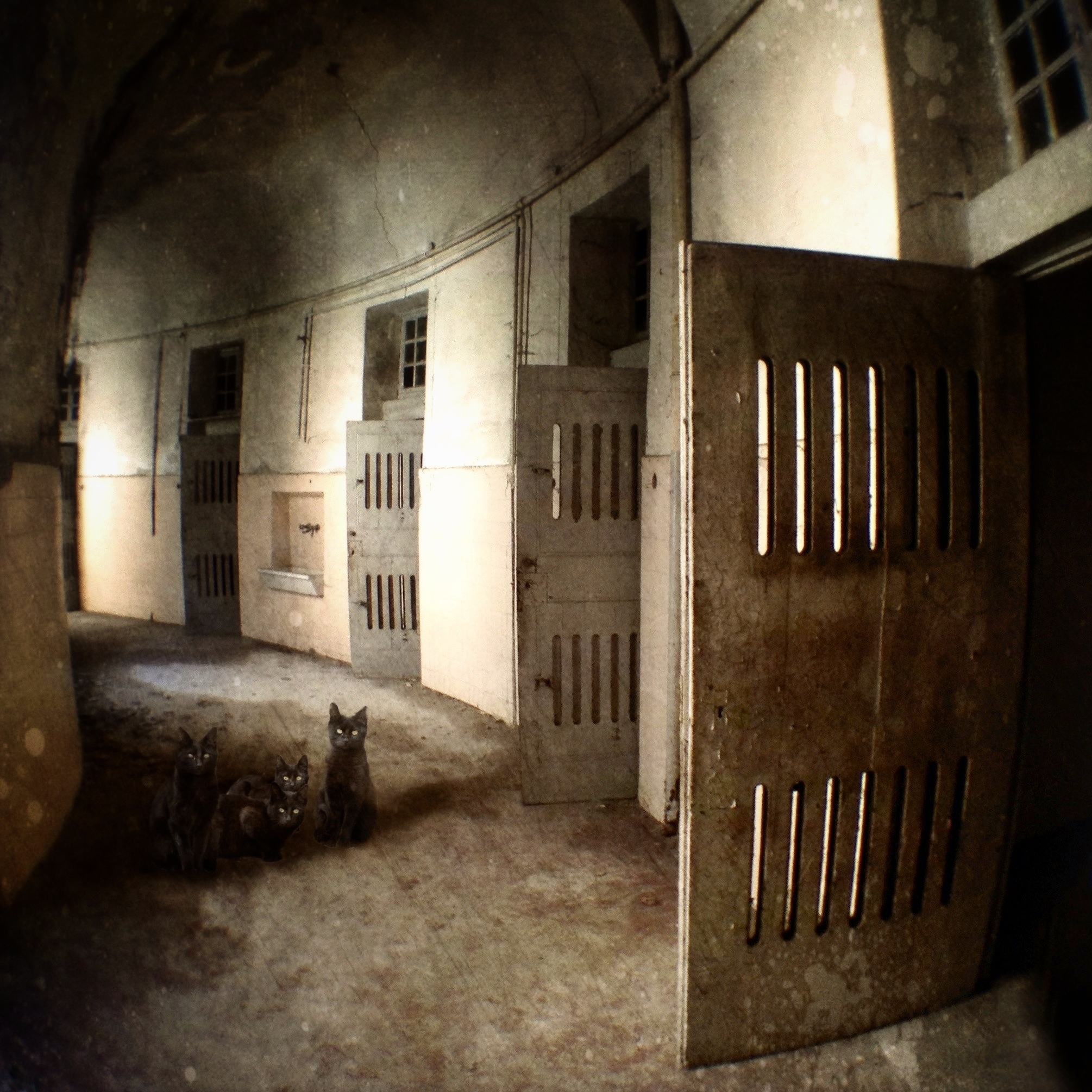
Voghera asylum – I came to know about this place thanks to an article in a newspaper. I contacted the caretaker who opened the doors of this terrible place. Here I am in the wing of the rooms without sharp edges, for dangerous patients. I’ve overlayed cats because the place was inhabited by a colony of cats and seeing them in that place was strange.
iPhone apps used: Snapseed, Superimpose, Mextures
In the 90s, I earned a degree in ‘Photo and Video Post-processing Techniques’ that has allowed me to work with professional photographers for about two years, mainly working on architectural projects using the legendary optical bench (before the advent of digital equipment), and also in photo reportage.
This also has allowed me to learn photography technique in the field, the accuracy of the frame and the importance of light. Over time, I let myself go more to the feelings of the place rather than thinking about technique. One of my teachers, an Italian fashion photographer (always with his Hasselblad in hand), liked to repeat that “It’s not the camera, it’s photographer.” This thought has always stuck in my mind, so I’ve experimented with a generic single-lens reflex, a disposable camera, several digital cameras and finally, an iPhone – which has been a pretty natural evolution. I always had this ‘eye’ in my hands, and began to use it.
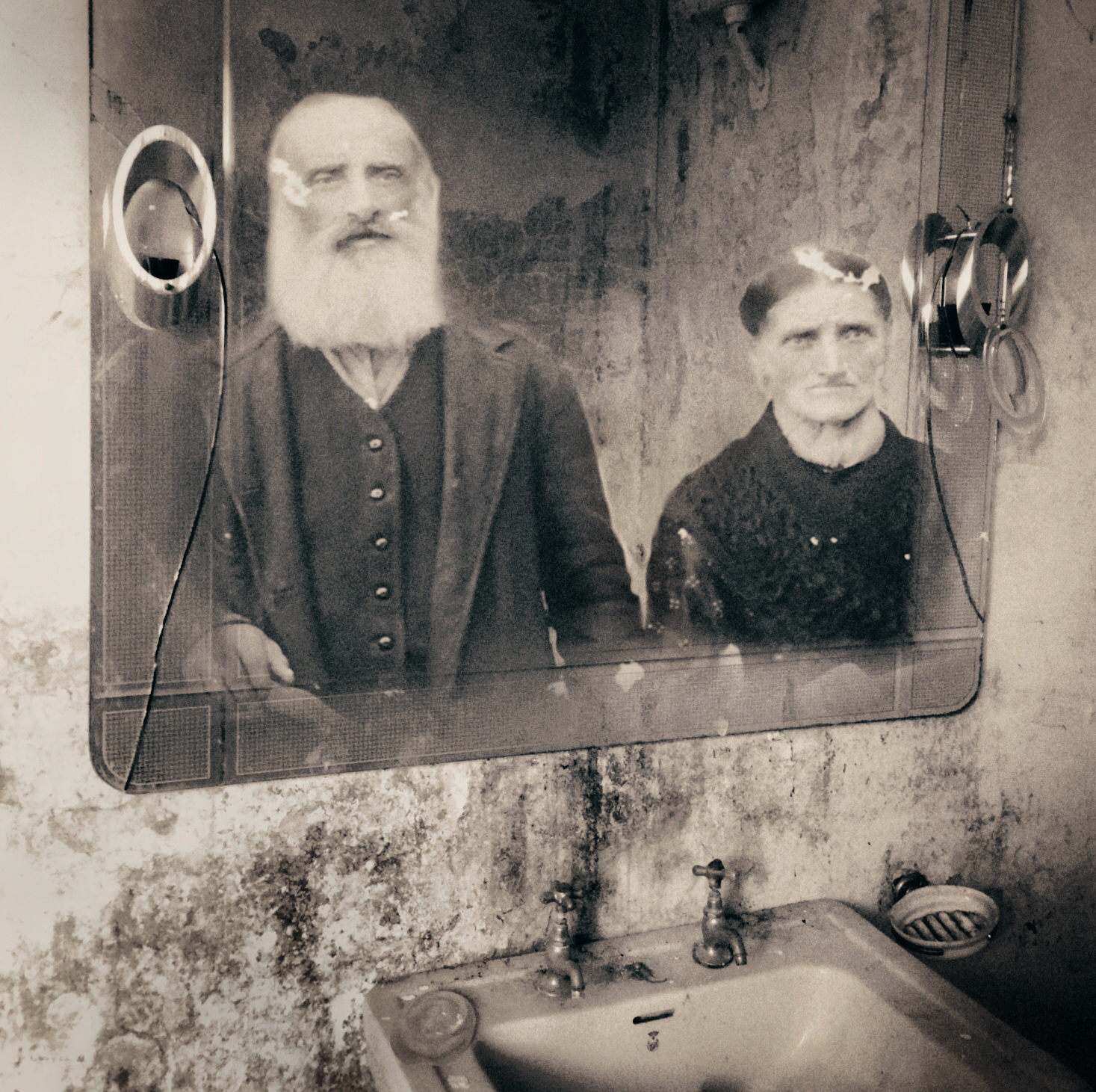
This picture is one of my favorites because of the subject. I’m in a bathroom of an abandoned villa, nicknamed ‘the circus house’ since the last family who lived here were artists. The first thing that came to mind when I saw the large mirror was thinking about how many people have been reflected in it over time – so after took picture, I added the persons you see in picture that are my great-grandparents, also in their original photo they seem very sad.
iPhone apps used: Snapseed and Superimpose to overlay the old photo onto the new one.
BW: What inspires you?
FC: For a long time, my passion has been abandoned places, I take inspiration from urban decay, abandonment of architectural environments and everything that communicates feelings, and not necessarily positive.
BW: How do you express your creativity?
FC: I like the visual art and experimenting with new techniques, so I paint with oil on canvas (nothing noteworthy, but to relax), and using the iPad as well.
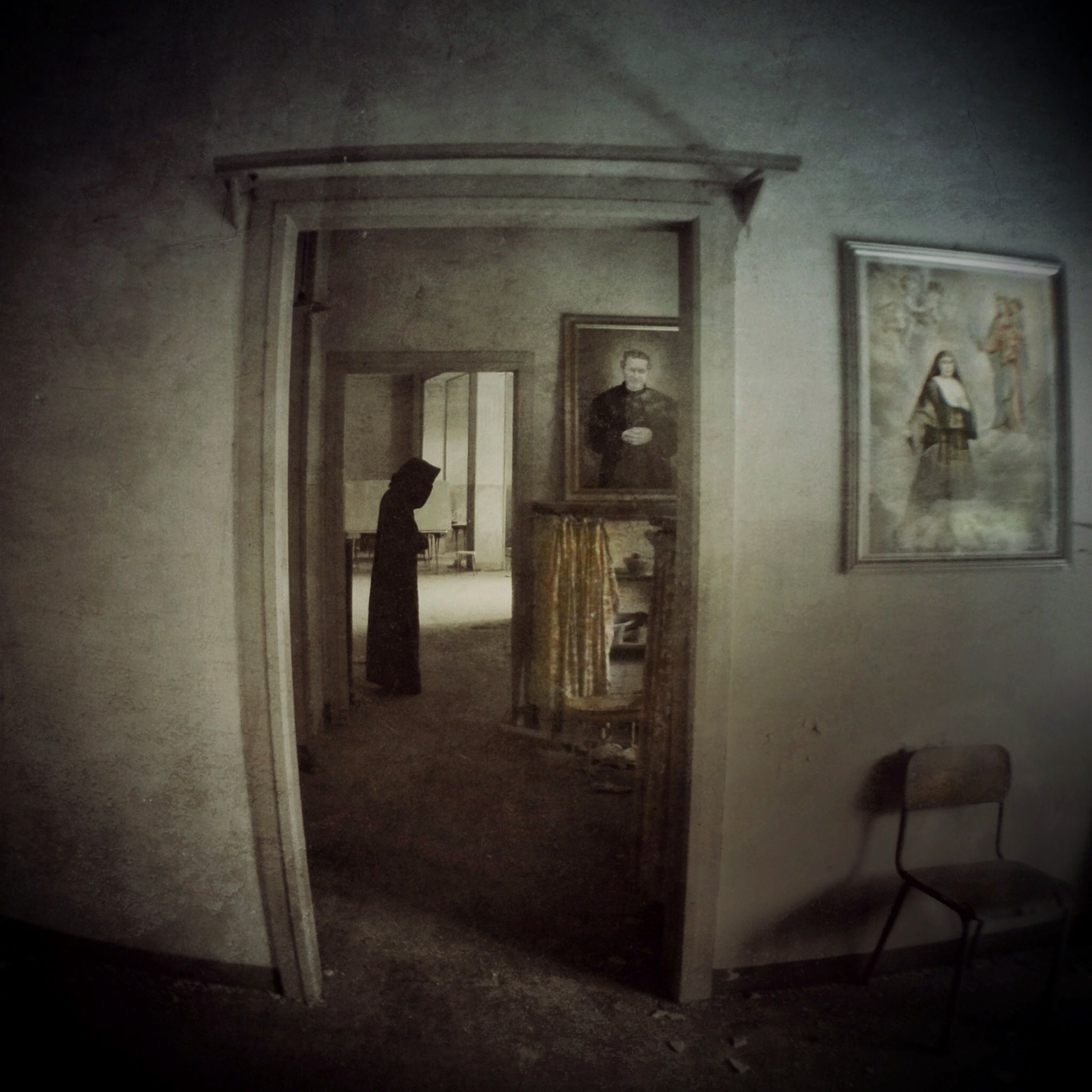
Lately, I am investigating the world of AI and how it can impact image creation – really, what amounts to a new way to concept art.
BW: What are you trying to communicate with your work?
FC: With my work I try to convey the pain of things that pass away, how time inevitably changes objects, places and people.
But it is not necessarily something sad, but more akin to melancholy.
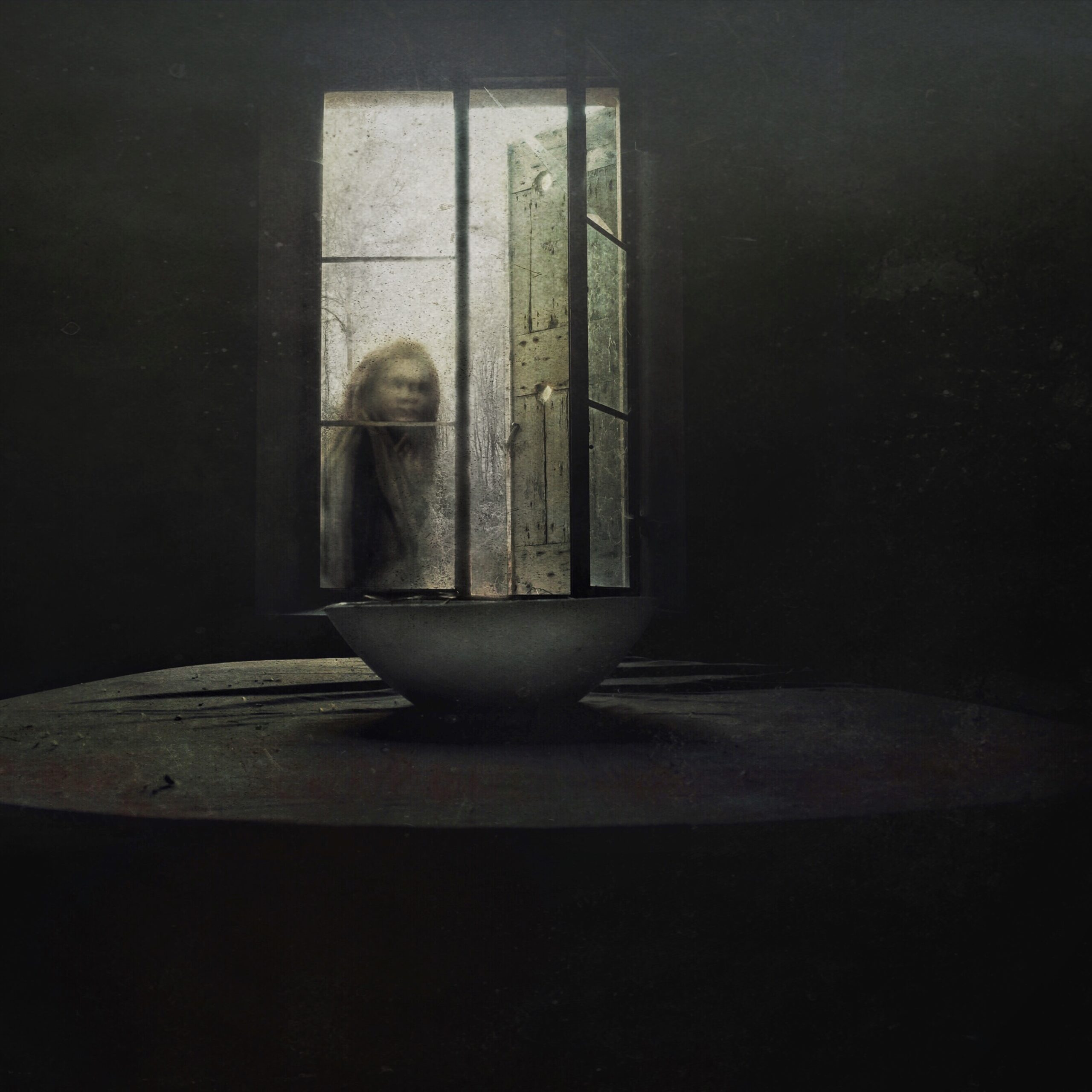
BW: How do you know when a work is finished?
FC: As I’m shooting, I’m very careful to photograph everything around me, even at different times of the day, to capture the best lighting.
I take several hours to shoot and I know when I finished because I’m exhausted!
But once I start to edit photos, I’m almost never satisfied with the first version. So if I haven’t achieved my goal for the piece, I stop working, and pick things up the next day. This generally does the trick, and often I realize the previous day’s work was good as well.
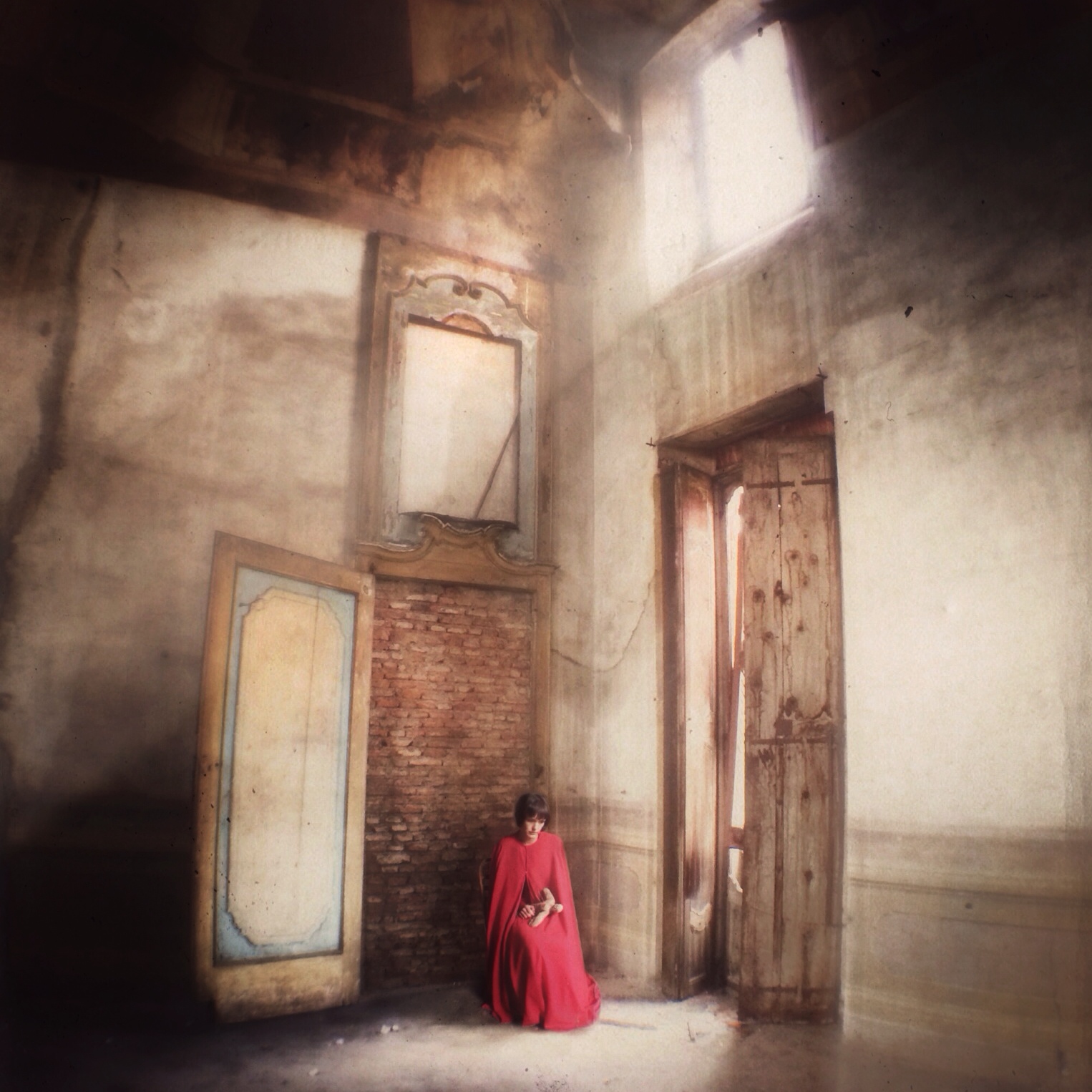
BW: What would you call your style of photography? It makes me think of Gothic and noir.
FC: It could be defined as a mix of the two styles, but leaning more toward noir.
BW: How do you go about finding your locations, and what are you looking for?
FC: I’m constantly looking for abandoned places, houses, hospitals, theme parks, etc.
But I’m not an “Urban Explorer,” always trying to find a new place to visit just because I can. I’m looking for emotions, inspiration and the serenity that abandoned places can give me. Often, I return to the same place several times if the feeling is good. It’s like coming home.

One of my first pictures using an iPhone 4 and Olloclip [detachable lens accessory]. My friend posed for me in front of an industrial door of an abandoned factory producing solvents. Not a place to stay for too long, but the huge space was amazing.
iPhone apps used: Snapseed, Lens Light to emphasize the light.
It can also happen that I find a location by chance, driving around looking for locations. These are the most exciting outcomes, but sometimes I come up empty handed and run out of daylight.
So, (and especially with the passing of the years), I now prefer to plan my shoots some days before. With the help of Google Maps it’s very easy to reach any remote destination.
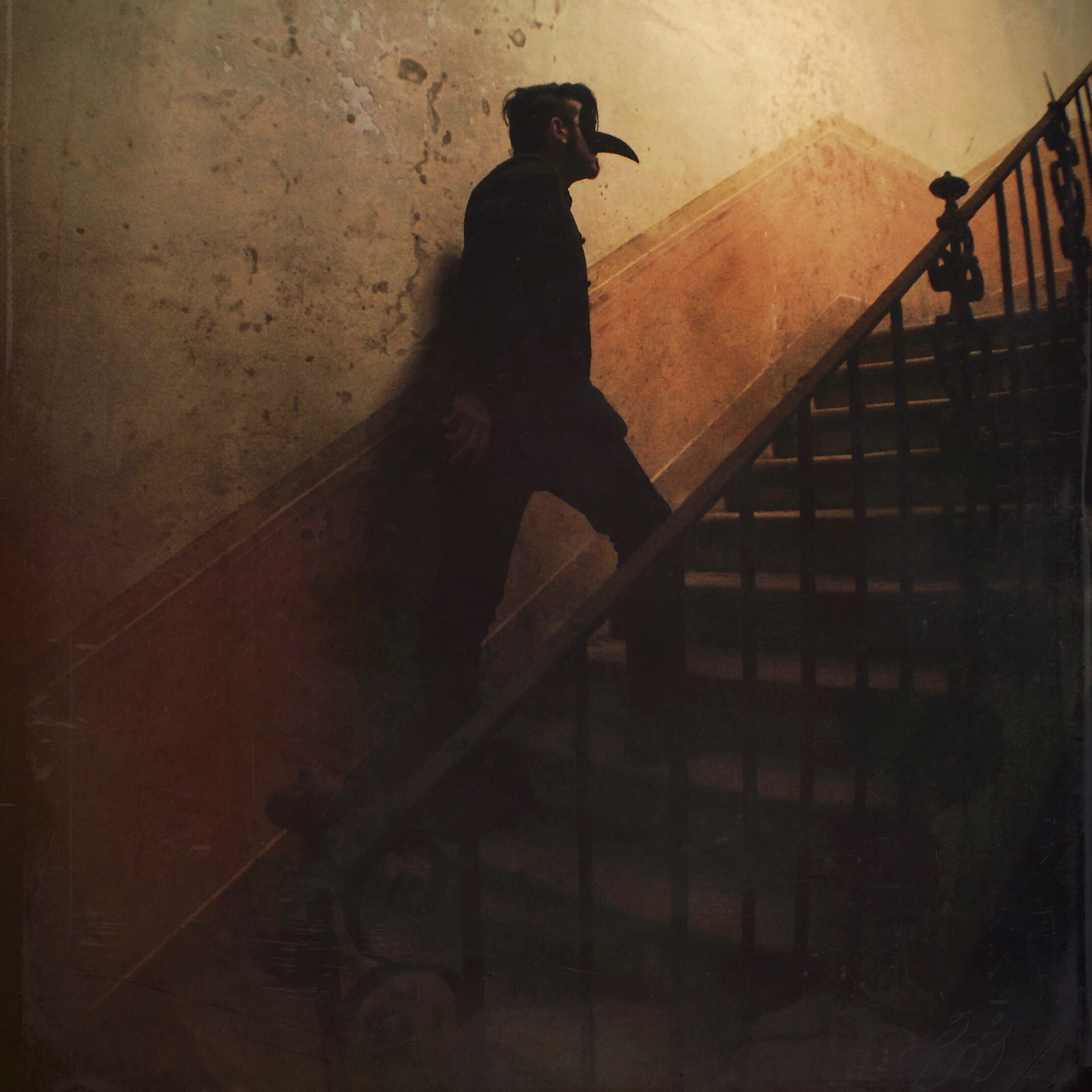
Sometimes I bring masks with me. In this case, my model-friend wore a type of mask used by plague doctors.
I remember that in this abandoned house the light filtered through the windows in a perfect way.
iPhone apps used: Snapseed and Mextures
I usually don’t touch any objects that I find on my visits. It’s all perfectly frozen in time, so much so that it would be a shame to change a single speck of dust.
If I have already in mind a scene with a model (or myself), for example, I will often bring something from home just to use as a prop if necessary.

An abandoned house surrounded by greenery , still in time. I think one of the best emotional I felt.
I sometimes like to work with models/friends, but more often than not I experiment with self-portraits, or simply shoot the scene as I find it (adding as little as possible).
BW: What iPhone apps do you use in your work? Any on the desktop?
FC: I primarily use Snapseed, Superimpose and Procreate on the iPad – with no desktop post-processing.
BW: What kinds of creative patterns, routines or rituals do you have?
FC: I don’t have any particular rituals, I let inspiration come, I try to make everything happen as natural as possible.
Sometimes I read old poems or stories to inspire me but not for a particular work, just to add more possible input that it will come out when I find myself in a place that gives me emotions.
Unfortunately my worst works are the ones ordered by someone, for book covers or CDs. Inspiration is forced and… mine doesn’t work well.
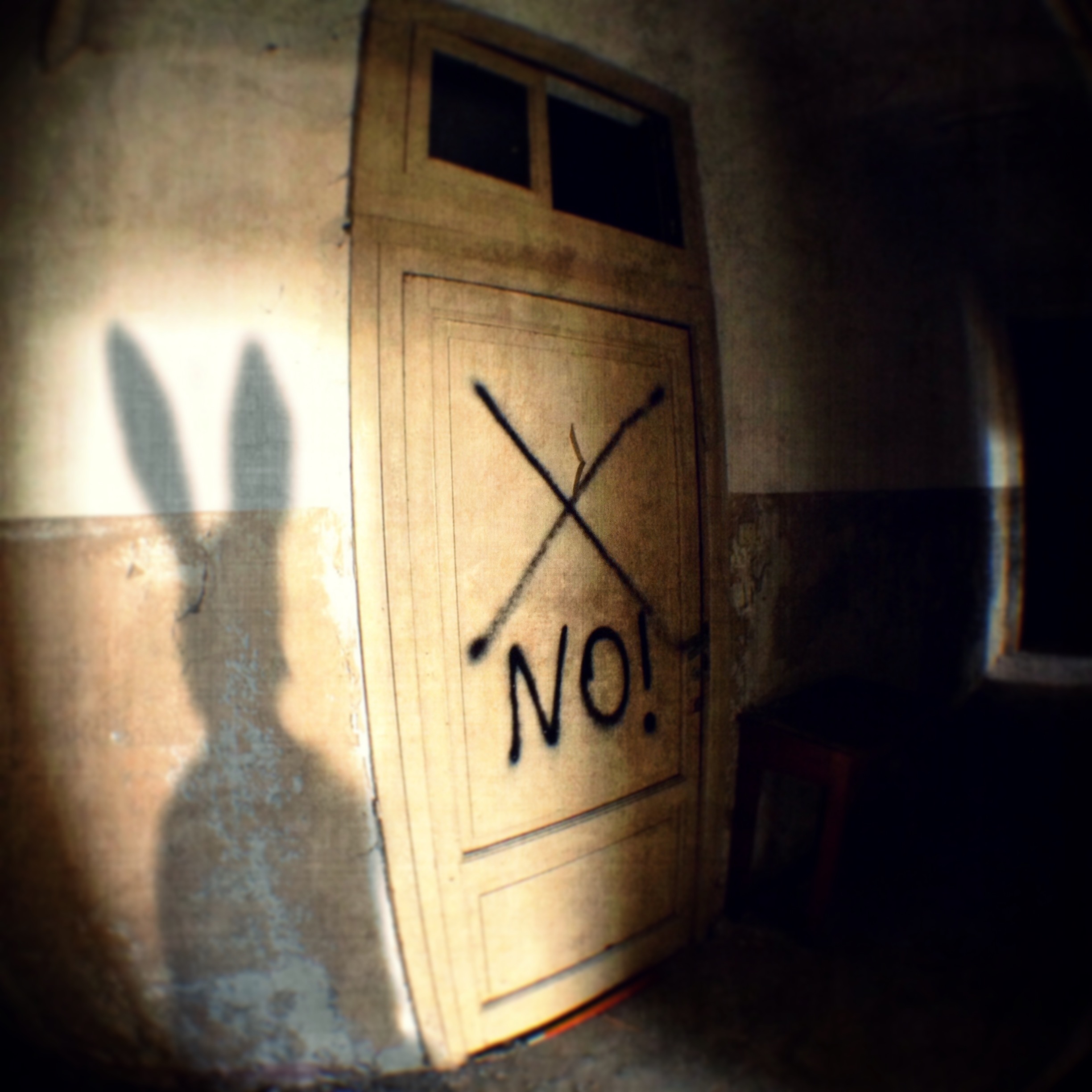
Here I’m in one of the largest abandoned orphanages near the border with Switzerland. It has been very emotional to see all small beds in the large dormitories, some still with pillows and sheets. I returned in this place other times.
Photo was taken with an iPhone 5 with Olloclip
iPhone apps used: Snapseed, Mextures and Superimpose (for the rabbit shadow overlay).
BW: What advice would you have for someone aspiring to do this type of photography?
FC: My advice is not to look too much at the technique but rather to let go in the silence, the scents around of these kind of places, full of small particulars that can bring in to a past life. There are a lot of really amazing pictures of abandoned places, that do not express any kind of emotion and the photos are just beautiful photos.
FREDERICA CORBELLI
ABOUT THE INTERVIEWER
Bob Weil is a former marketing exec and practicing mixed media digital pictorialist living in Omaha, Nebraska. He has won numerous awards for his work and has exhibited in New York, Los Angeles, Canada, Italy and Portugal. He is a published author and teacher on digital art subjects with 2,400 students in 52 countries. Bob co-authored The Art of iPhone Photography with Nicki Fitz-Gerald for Rocky Nook Photography Books.




